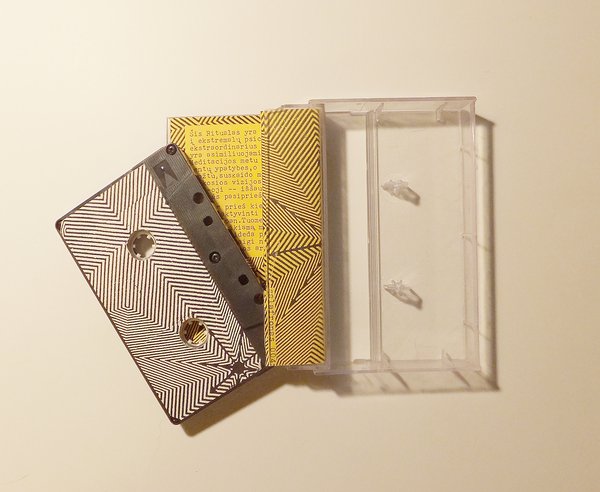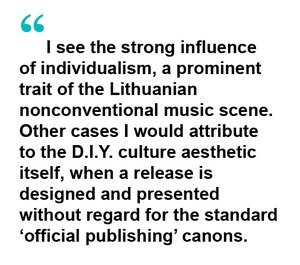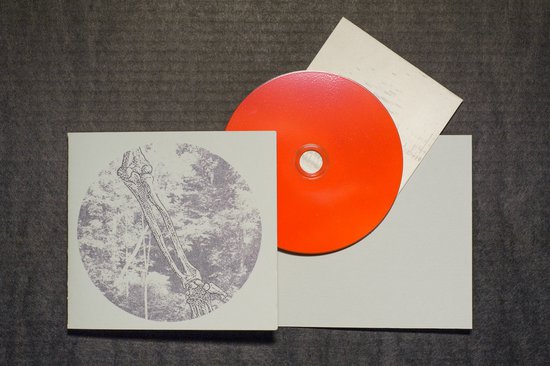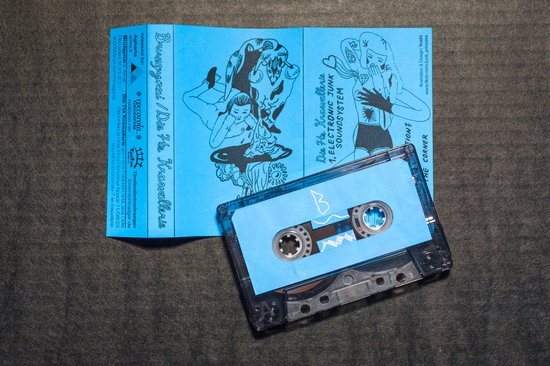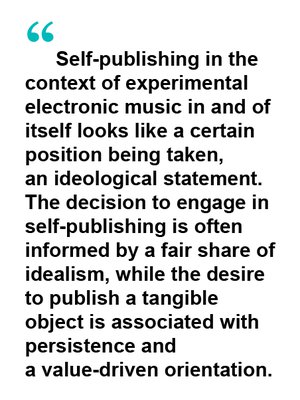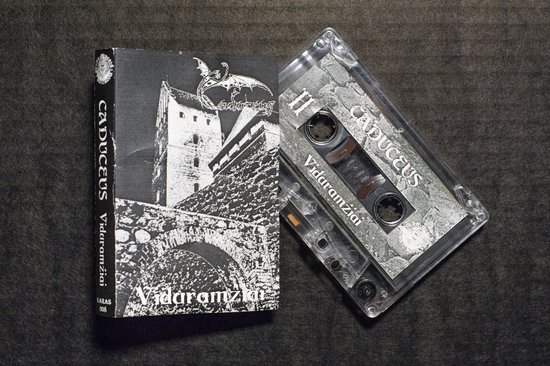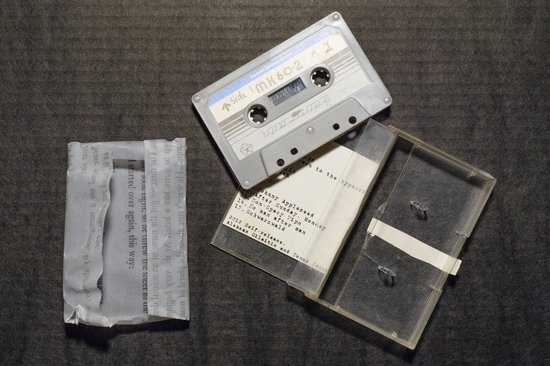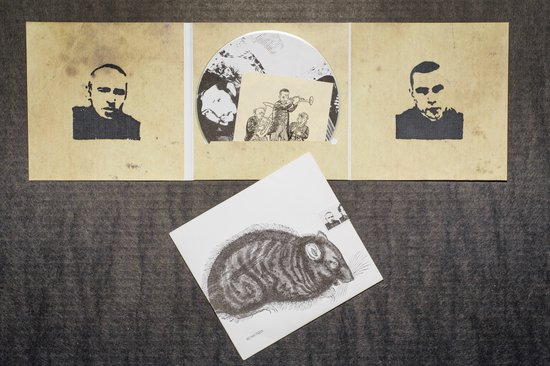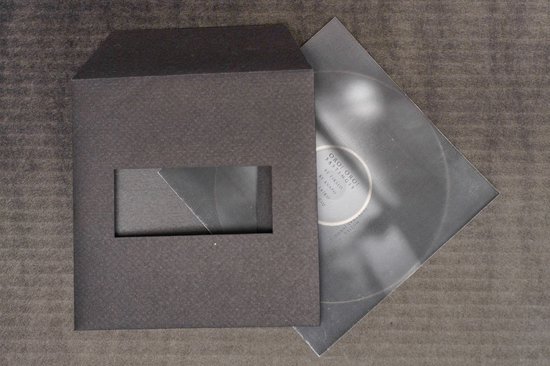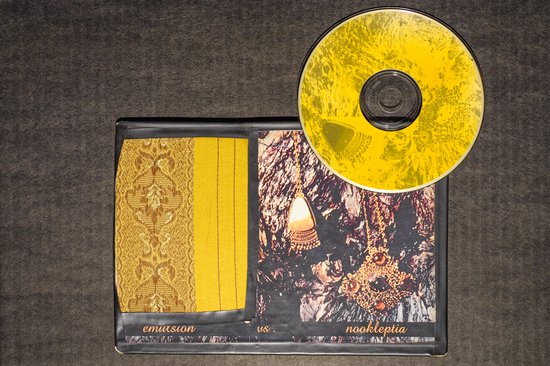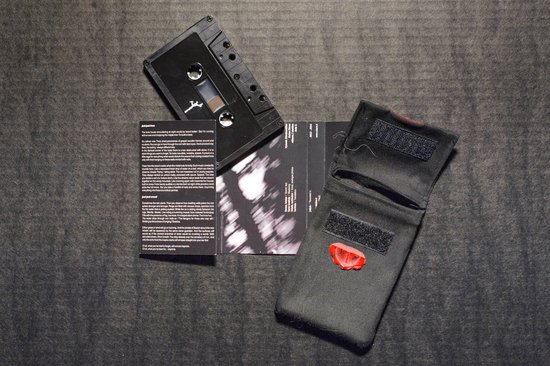Povilas VAITKEVIČIUS | Lithuanian Nonconventional Music Publishing: Ideas and Individualism
In this text, I will attempt to trace the contours of the phenomenon of Lithuanian experimental electronic music self-publishing. There are, of course, numerous vanishing borders and cases which resist concretisation, but some forms enveloped, as it were, in the mist can nevertheless be discerned. The discussed context is related more to nonconventional music, or the so-called ‘underground’. One of the reasons is that authors who are more active in the ‘academic’ sphere engage in self-publishing much less, because their releases mostly appear thanks to funding by the relevant state bodies. Another tendency discussed in this text is to focus on the physical format rather than on the online one, because the latter requires less actions pertaining to self-publishing. The information value of Internet-exclusive releases is unquestionable, but this article emphasises the tangible result. One more ‘parameter’ is the period, which began roughly in the early 1990s and continues to this day.
Self-publishing in the context of experimental electronic music in and of itself looks like a certain position being taken, an ideological statement. The decision to engage in self-publishing is often informed by a fair share of idealism, while the desire to publish a tangible object is associated with persistence and a value-driven orientation. At least in the case of Lithuania it also becomes one of the main pillars of such music, because self-publishing helps authors create a specific (sub)cultural space and maintain mutual ties. In the world of ‘standard’ music this is done by record companies, but here the priority is often given to music which can generate profit. Meanwhile, in the nonconventional music scene the decision to release something is in most cases based on the tastes of the person(s) managing the label. For the sake of balance, one should mention the cases of physical format snobbism, where the quality of the design of the release greatly surpasses that of the sound content.
The format divide increasingly deepens. The reason is the growing migration of audio information to virtual space. One can come across various opinions on this matter, sometimes quite polarised, yet it is certain that the proponents of the physical medium do not shun the possibilities provided by information technology: the physical format represents the value-based and ideological level of a release, while the online version creates the distribution and contact base. Obviously, ‘format purism’ may restrict the speed and width of the spread of music. Although online platforms provide more opportunities to the noncommercial music scene, this simplicity also results in the emergence of lower-quality ‘releases’ which seek fast attention. On the other hand, offering people the option of downloading your work does not exclude the possibility of them buying the physical version. Even if authors stream their debut releases solely through the veins of the Internet, a physical release still becomes a certain sign of status as the project matures. This was the trajectory chosen by quite a few experimental electronic music authors active today (Lys, Rumunija, Tiese). With self-publishing, the authors themselves decide to present their music in a chosen medium, but the very notion of self-publishing encompasses more than just an ‘independent decision’. As already mentioned, it is also an ideological stance. I would argue that the strongest ‘inner’ reason is a wish to create a product that will be a pleasure to have for the artist himself, having in mind that time, energy, and money went into its production. At the same time, it is the achievement of a set goal, proof of responsibility to one’s music. Here I see the strong influence of individualism, a prominent trait of the Lithuanian nonconventional music scene (which I have discussed in an earlier text). Other cases I would attribute to the D.I.Y. culture aesthetic itself, when a release is designed and presented without regard for the standard ‘official publishing’ canons. On the one hand, that is associated with a certain ideology which rejects the rules of consumer culture; on the other hand, it also entails smaller costs (for instance, printed vs. xerocopied covers). Still, recent manifestations of self-publishing have, it seems, been combining both of these forms of presentation, and I would see this tendency as dominant: because the music is noncommercial, reaching one’s goals occasionally requires compromises. One of the most prominent of them is the audio cassette format.I probably would not be far wrong in naming the audio cassette as one of the most convenient media for the distribution and audio communication of self-published and subcultural music. Recently this medium has experienced a certain revival. In fact, it has never disappeared from the radar of the underground music scene. For a while, the wave of newly available CD-Rs prevailed, but soon cassettes reclaimed their position when it turned out CD-Rs were unreliable and non-durable. Certainly, there may also be an element of nostalgia or vintage fetishism here; regardless of that, financially it is the most advantageous option for having a tangible form in addition to the virtual one. Another important argument is the flexible reproduction option. If the authors want to have factory-produced CD releases, they must comply with the production requirements associated with it, such as the obligatory minimum number of copies, the financial outlay connected with that, etc. Despite that, the CD format is still quite popular in self-publishing.
Self-publishing is quite often interconnected with the activities of nonconventional music publishing companies, and in many cases matches the aforementioned traits and criteria. Most niche labels run on the same fuel as the turbines of self-publishing. In the first decades of Lithuanian independence the technical possibilities of both the underground nonconventional music labels and the self-publishing enthusiasts were practically identical. Many people became possessed with the burning desire to have their own label or recording company, but most of these aspirations ended up being extinguished after one or two releases (most of the time those were publishing projects launched by the artists themselves). The most basic symptom of a ‘label’ is continuity: three or five successive releases entrench associations with a particular musical style. Some initiatives managed to outgrow the playful stage and acquire a more sustainable label form (such as the Utena-based Fiasko Zone or Vilnius-based Vetšo Mėnesio Vaizbuva and Dangus). Having in mind the nature of the discussed music, such sounds usually had to find a place under the umbrella of publishers who promoted alternative music. In their turn, the latter did not avoid squeezing a more unusual release in among their usual metal / punk rock and similar output. I would see that as a certain act of solidarity in ‘musical otherness’; furthermore, a lot of experimental music authors were also members of alternative music bands.It must be noted that most of these labels emerged out of one individual’s passion for music. Very rarely, it was a collaboration of several people. Dangus (formerly Dangus Productions), which has grown into a solid postfolk record company, is one of those rare examples. This ‘corporation’, established in 1993 by Ugnius Liogė and several fellow-minded people, paid tribute to punk rock with its very first release in the same year, and presented the compilation Dark Fire Dancing in 1994. This CD featured ambient and experimental pieces alongside metal tracks. One of the first releases of the Wejdas duo (classified as amber ambient) was published the same year. Even in an earlier record by the grotesque black metal project Anubi there were numerous detours in the direction of avant-garde experimental sound. This and later examples only serve to confirm the aforementioned fact of ‘collaboration in otherness’. For the sake of documentary proof one should give several more examples illustrating this subtopic like the discography of the now-defunct Utena-based Fiasko Zone label, which featured such names as Dioxoid (electronic experimental wave) or Gdae and Ragis (pagan ambient) alongside alternative music. The Vetšo Mėnesio Vaizbuva label, focused on the pagan heritage, released records by Caduceus (electronic / modern classical) and Raunijas (ritual ambient / pagan / drone).
Of course, not all (usually) metal-oriented labels accepted harder to comprehend sonic forms into their ranks. However, the above-mentioned facts demonstrate a certain trend. One should also mention some paradoxical cases when more leftfield releases sporadically showed up on the rosters of commercial labels aimed at the popular market. For instance, in 1994 the pop label Pūkas released a cassette Apsakyms apė pradžią ir galą pasaulės (A Story about the Beginning and the End of the World) by the cult Lithuanian noninstitutional avant-garde band Echidna Aukštyn. Needless to say, the sound of this record (new age / electronic) was perhaps one of the most accessible in the band’s oeuvre for the mainstream audience, but in the context of Pūkas it was a notable exception. In another instance, one of independent Lithuania’s major labels, Bomba Records (which went bankrupt in 2011), released a cassette by the avant-garde (punk) rock band Ir Visa Tai Kas Yra Gražu Yra Gražu in the beginning of its operations. But these are individual cases which have little in common with the profusion of self-publishing under consideration here. Even if we keep in mind the ‘collaboration in otherness’ discussed above, an equally sizeable part of nonstandard sounds reaches listeners through media put out by the authors themselves. First, the tiny number of labels which accept the experimenters into their catalogue tend to select artists based on personal tastes. Second, because of being underground, these labels do not have enough resources to increase the number of their releases (especially the ones deviating from the main stylistic current). Hence, niche music has always had and still has to solve the issues of its sociocultural connections autonomously, and here again one may recall the assertion about Lithuanian creative individualism. Although it has encouraged original ideas and solutions, it has at the same time created certain quite exclusive communication networks. Occasionally groups of individuals interested in similar music have had almost no contact. This was a result of belonging both to ideologically different musical streams and geographical location (for instance, it would be hard to claim that the interaction between the Vilnius and Kaunas more leftfield music scenes is very active). In many cases, particularly in the first years of independence, a release was not an aspiration in itself, because the essential goal was to ‘show one’s music to somebody’. Furthermore, such aspirations were also inhibited by the limited possibilities at the time. Still, creative ambitions compelled artists to adorn even the media recorded in the most lo-fi setting with some kind of design, thus emphasising that such a cassette had a higher status than just a dubbed copy. The most important tool in this reproduction was a black-and-white copy machine usually called a xerox. The layout of a release cover was made manually, writing the text using a typewriter or, more rarely, by hand. Gradually, as the range of available tools expanded, examples of colour copies and computer-aided layout emerged, but a major part of releases circulated with ‘classical’ black-and-white xeroxed covers, closely associated with the D.I.Y. aesthetic.Even without a particular emphasis on the medium type, the preceding paragraphs hint at the prevalence of the cassette format, which characterised the 1990s as well. While a PC was still unaffordable to many, and a recording studio was synonymous with almost unimaginable luxury, the music was recorded directly onto cassettes. The specifics of making sounds in this case is different from instrumental music, and the recording itself is a part of the creative process. Thus, having in mind the oft-mentioned D.I.Y. aspect, technical limitations have probably been an additional impetus for creative sonic solutions.
With the relatively quick proliferation of computer technology, the cassette format was washed away by the wave of CD-Rs. This medium seemed to provide broader and easier to implement possibilities for self-publishing. Copying CD-Rs avoids many technical glitches – the sound and quality of one copy will be identical to those of another. In the case of copying cassettes, everything depended on the quality of equipment and the medium itself. Those who had twin cassette decks and blank cassettes of reputable brands could expect better results. In other cases, the solutions were very diverse, from rewriting to using cassettes of different types. The CD-R medium made everyone’s possibilities pretty much equal. One of the most prolific as to quantity and the choice of packaging options was the label of Armantas ‘Arma’ Gečiauskas, established in 2004 as Perineum Productions and transformed into Agharta Tapes five years later. Having drifted away from more extreme musical streams (grindcore / noise), the label released more than several dozen recordings of a limited conceptual run (e. g. 33 or 44 copies). In addition to the visual side, they were characterised by particular attention to the tactile aspect and packaging, which employed nonstandard paper or other basically waste materials such as corrugated cardboard, textile offcuts, wallpaper patterns, leather surfaces, feathers, nontypical formats, etc. This often produced a feeling of strange uncertainty, and such aesthetic created an aura of mystery. It was further intensified by the aforementioned small print runs, the little-known names of the authors and the musical projects. One should note, however, that most of them were not from Lithuania, and the local scene had a lower profile in this label. In a sense, CD-Rs could be called an intermediate stage in the evolution towards factory-produced CDs. The aforementioned Dangus label also released several CD-R records (Girnų Giesmės, Notanga). Autarkeia, which has grown to become one of the major industrial labels, used this format at the beginning of its activities as well (for releases like Baltic Flour Mills or Siempre No). Still, this medium was most widespread in the self-publishing sphere as the most accessible way to present one’s recording in a tangible form. Finally, we come to the issue of print runs. In self-publishing, it would seem that there is a simple explanation for short runs: it is directly related to the artist’s financial resources. In the case of a particular musical niche, the number of copies likely to fly off the shelf is more or less predictable. A defined amount is useful for controlling outlay when ordering the media. Often the print run also reflects a certain idea or a personal numerology, as authors choose numbers other than round ones – 99, 88, 77, 44, 23 and so on. In this way, the print run itself acquires a certain added value.Virtual releases circulate on the Internet, just as all information on what’s new does. Those willing to buy a physical release can do so in three ways: use the mailing services, buy a release at an event, or directly contact the authors and buy it from them cutting out the middle man. The mailing services remain the main connection. In the pre-Internet era, envelopes with flyers containing all sorts of information circulated via mail. One should also mention the active circulation of releases or their exchange among the artists themselves, which stimulated not only friendships but also a sense of community in general. It created a special, much more immediate and personal, sociocultural (or subcultural) atmosphere in the context under discussion here, differing from the typical official or commercial music marketing.
Today, the symbiosis of virtual and real publishing and self-publishing continues in the Lithuanian nonconventional music scene. The audio cassette and the CD are the prevalent physical media. In fact, in recent years more cassettes, even more than CDs, have been released, while the CD-R medium has almost completely vanished. The present self-publishing situation in the Lithuanian niche music scene is essentially similar to international trends. This is possible thanks to the opportunities presented by the unrestricted flow of information, mobility, and contacts. All the same, in the case of Lithuania, greater care is still paid to the end result; that, together with individualism, I would consider to be the most distinctive trait of Lithuanian self-publishing.
Translated from the Lithuanian by Jurij Dobriakov
English text edited by Romas Kinka
